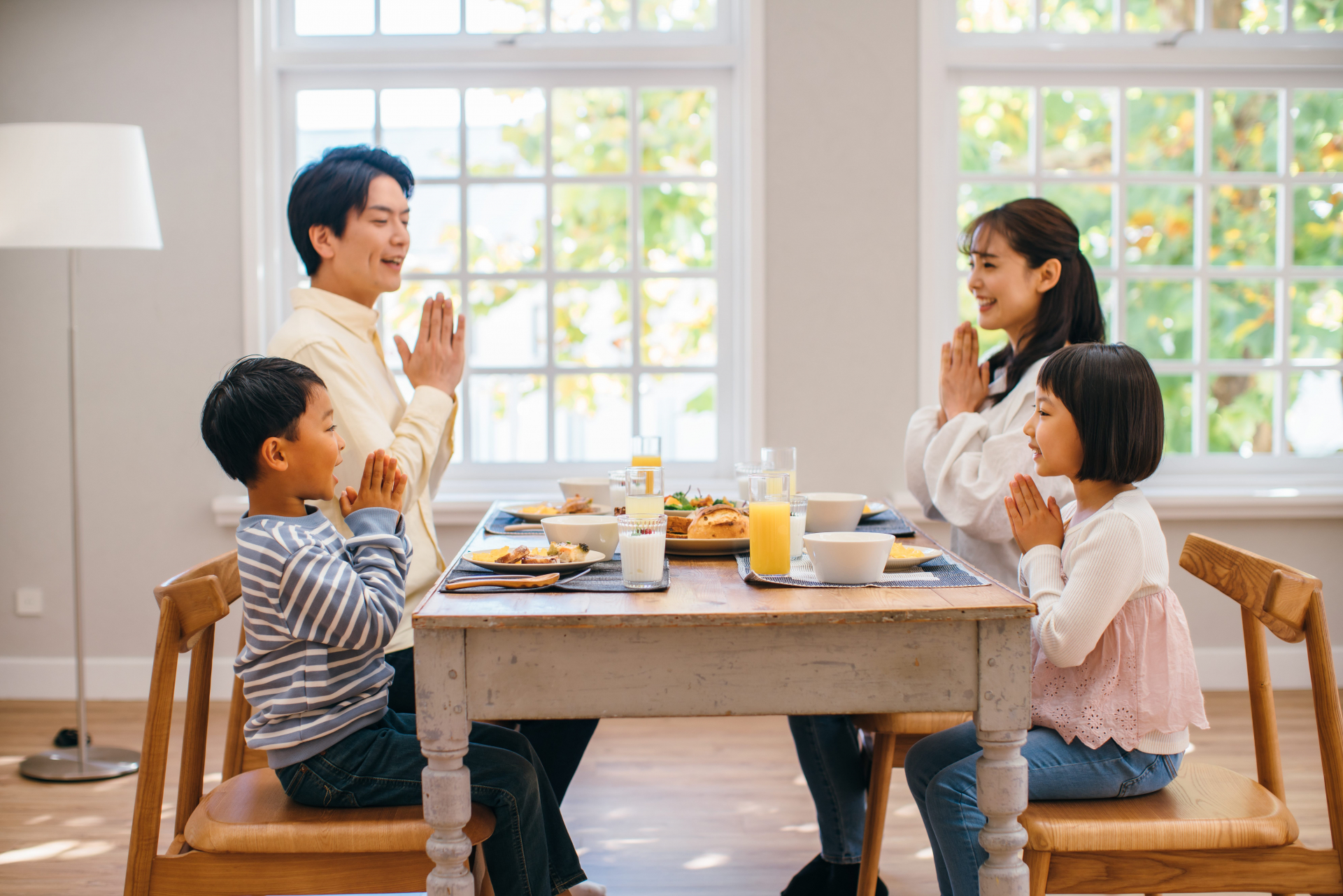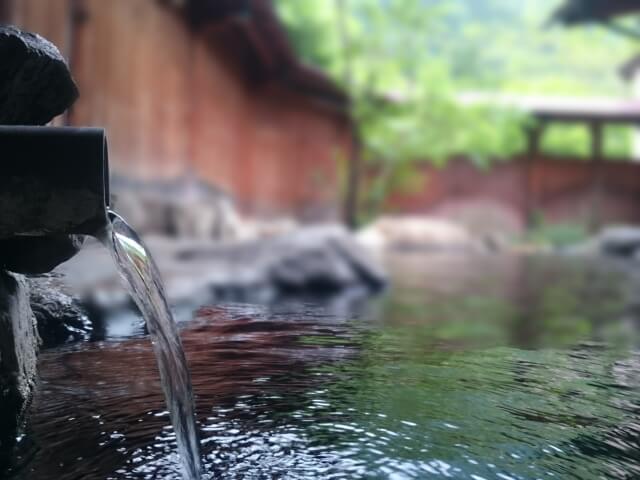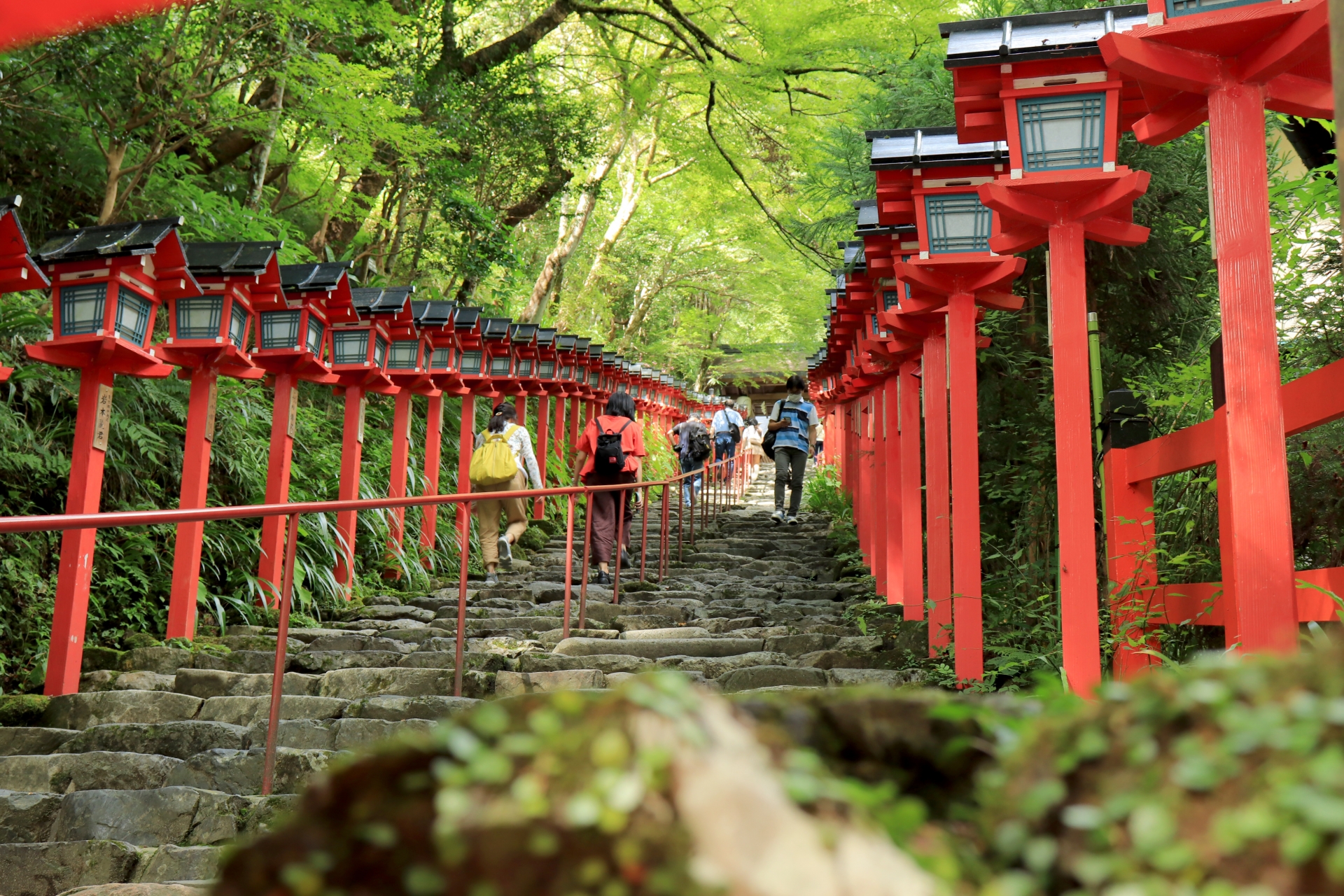Just as there are table manners in France and England, there are also table manners in Japanese cuisine that should be followed when you are visiting Japan. There are so many different types of manners, such as how to hold cutlery and how to behave at a drinking party.
Some similarities and differences can be seen between world table manners and Japanese table manners. Let’s take a look at the complicated world of Japanese table manners in this article.
1. Say “itadakimasu“
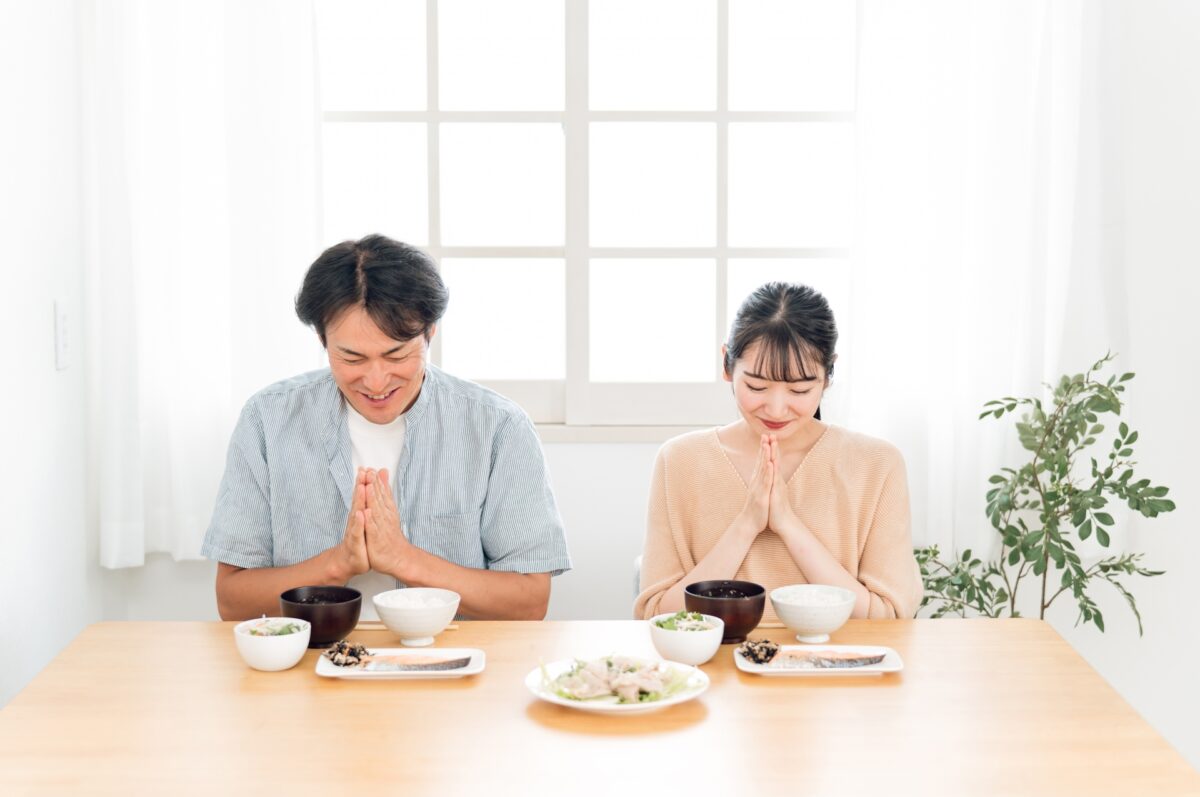
It is good manners to say “Itadakimasu” before eating your meal in Japan. “Itadakimasu” has two main meanings: one is to express gratitude to the person who prepared the food, and the other is that there is life in every meal we eat, and we should be grateful for the life we receive. It is also good manners to say “Gochisosamadeshita” when you have finished eating too!
2. Chopsticks dos and don’ts
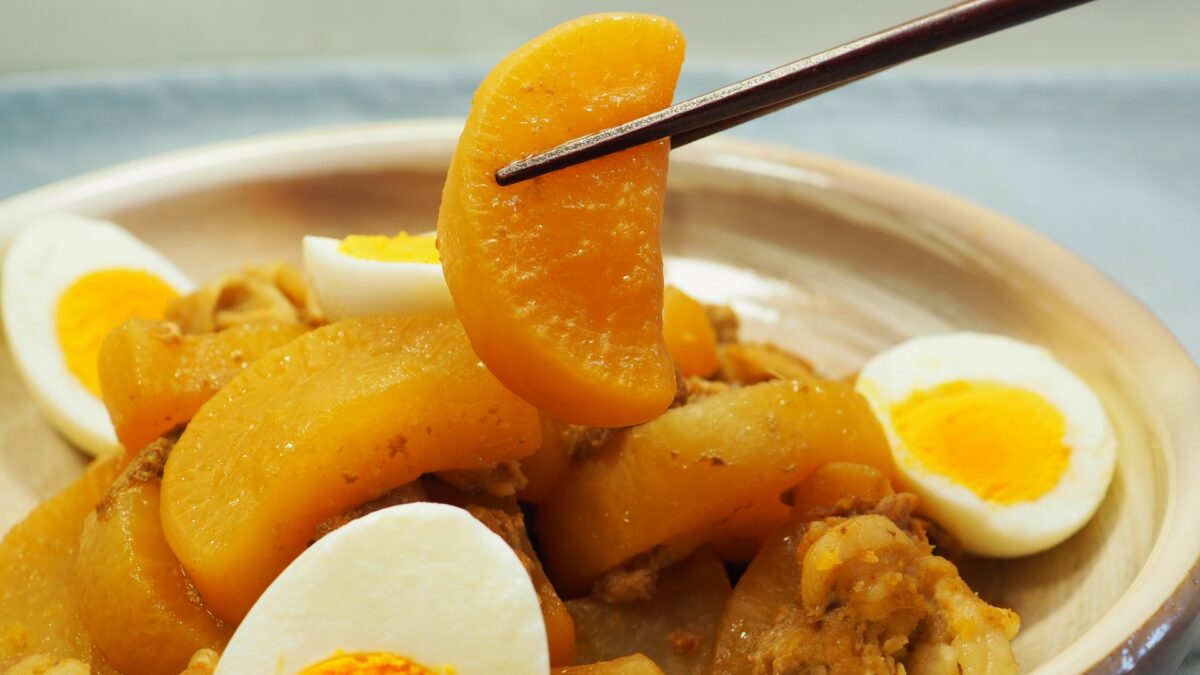
Manners with chopsticks are especially strict, and if you use them incorrectly, you may be warned by others. For example, when drinking soup, it is considered good manners to put your chopsticks inside the bowl. On the other hand, there are certain chopstick behaviors called “きらい箸(kirai-bashi)”, which are not supposed to be done in public. These include sticking chopsticks into a bowl of food, cutting food with chopsticks, or passing food between chopsticks. There are many other manners specific to chopsticks, so if you want to learn how to use chopsticks correctly, be sure to check them out.
More information for Kirai-bashi
3. Hold your bowl
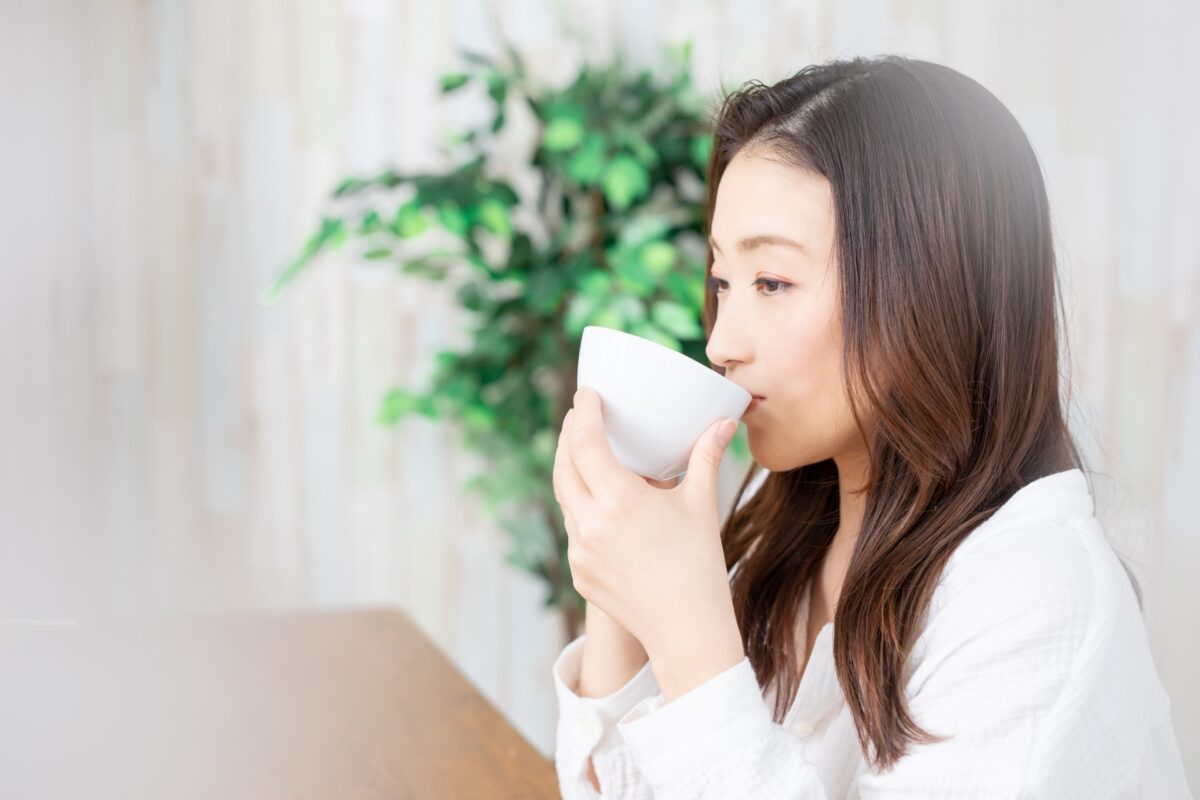
Eating without holding a bowl of rice or miso soup is frowned upon in Japan. It is not good manners to eat with your face close to the bowl. Hold the bowl firmly in one hand, bring the bowl up to your face and eat your meal with your posture straight.
4. No elbows on the table

In many countries, it may be considered bad manners to put one’s elbows on the table or desk while eating. Even in Japan, this behavior is not considered good manners, and many Japanese have actually had the experience of being warned by their parents when they were children for putting their elbows on the table or desk while eating.
5. Slurping your noodles
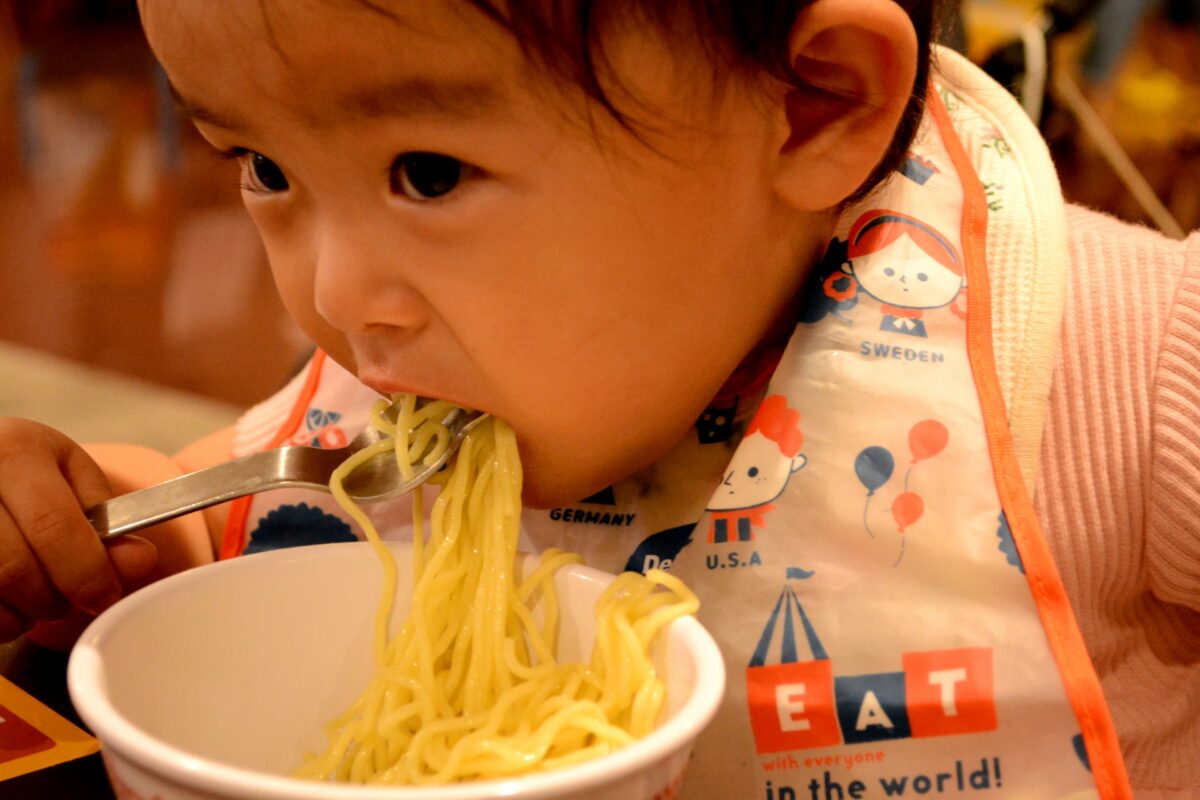
In many countries, the sound of slurping noodles during a meal is considered unpleasant and something to be avoided, but here in Japan, it is acceptable to make such a sound. At soba and udon restaurants, many Japanese people eat their noodles while making slurping sounds. Incidentally, it is not allowed to make slurping sounds while eating pasta in Japan.
6. Use oshibori
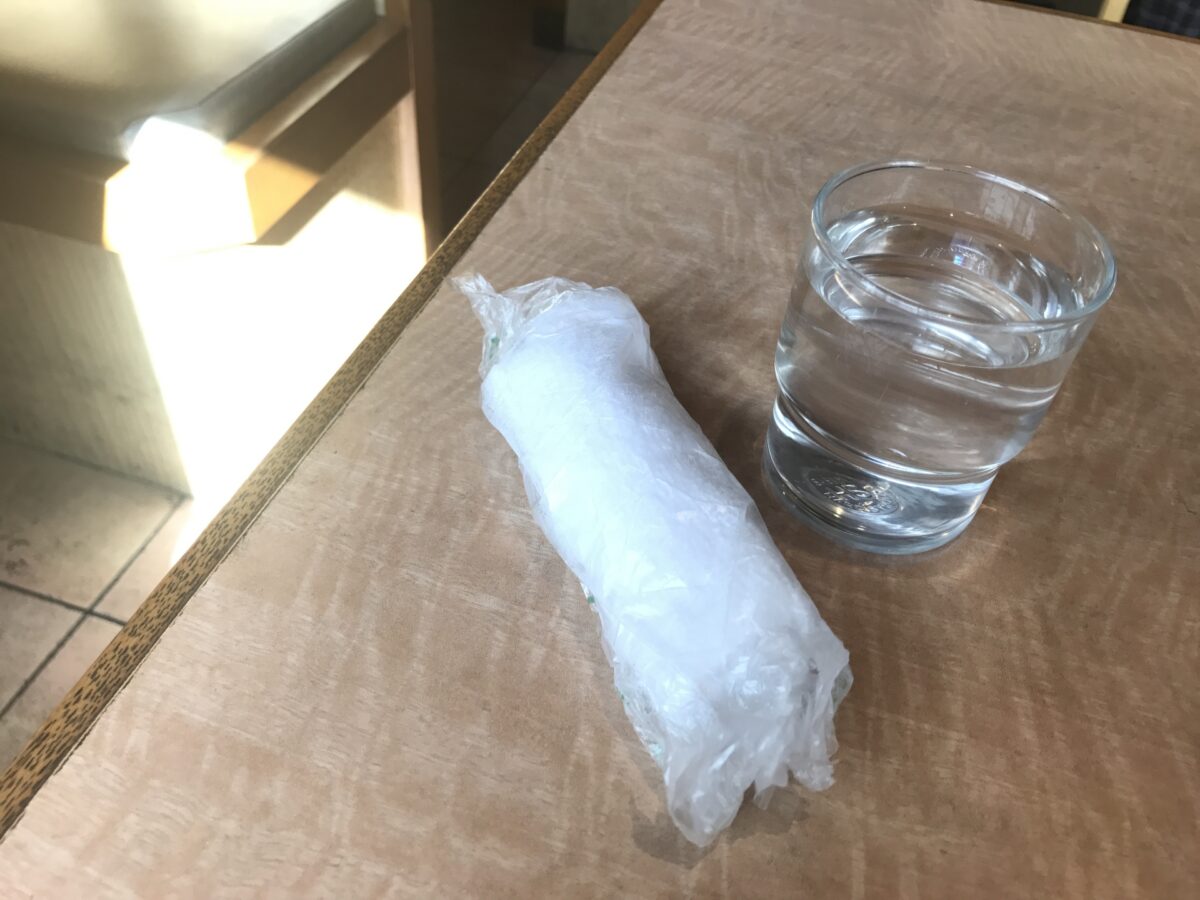
In many Japanese restaurants, you may be offered an oshibori. An oshibori is a small towel that has been pre-warmed or cooled and is offered free of charge when the customer is seated. It is good manners to wipe one’s hands with an oshibori towel before eating. It is said that the concept of oshibori was originally started to be served to customers who visited one’s restaurant in order to soothe their fatigue. Incidentally, it is against etiquette to use an oshibori for anything other than wiping one’s hands. Wiping your face or wiping the table is not a good idea, so please be careful.
7. Wait to drink until “kanpai“
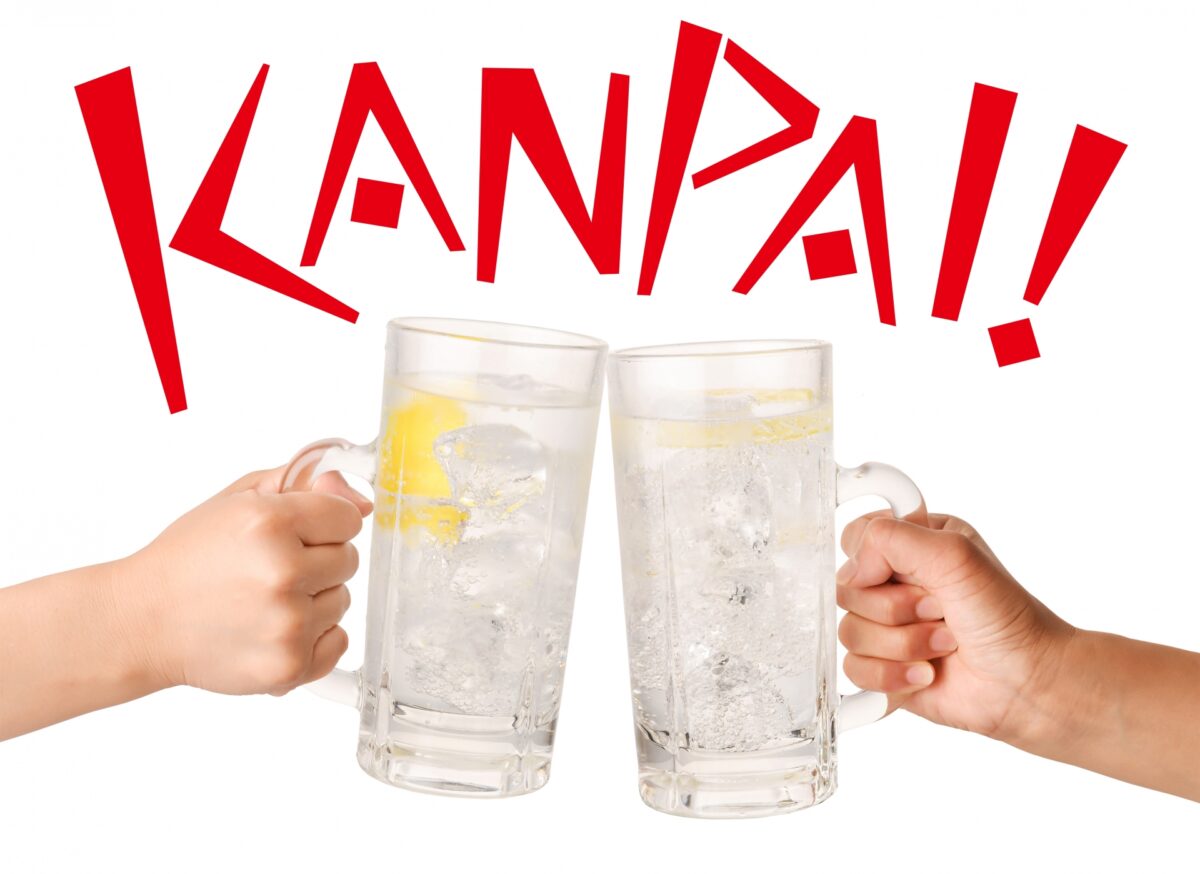
When starting a party with several people, such as a group or a drinking party, one thing you should not do is to start drinking before hearing a toast (乾杯! Kanpai, Cheers!). This is because starting to drink without hearing a toast can ruin the atmosphere of the party. Even if there is a delicious-looking drink in front of you, wait patiently for the toast!
8. Pour drinks for others
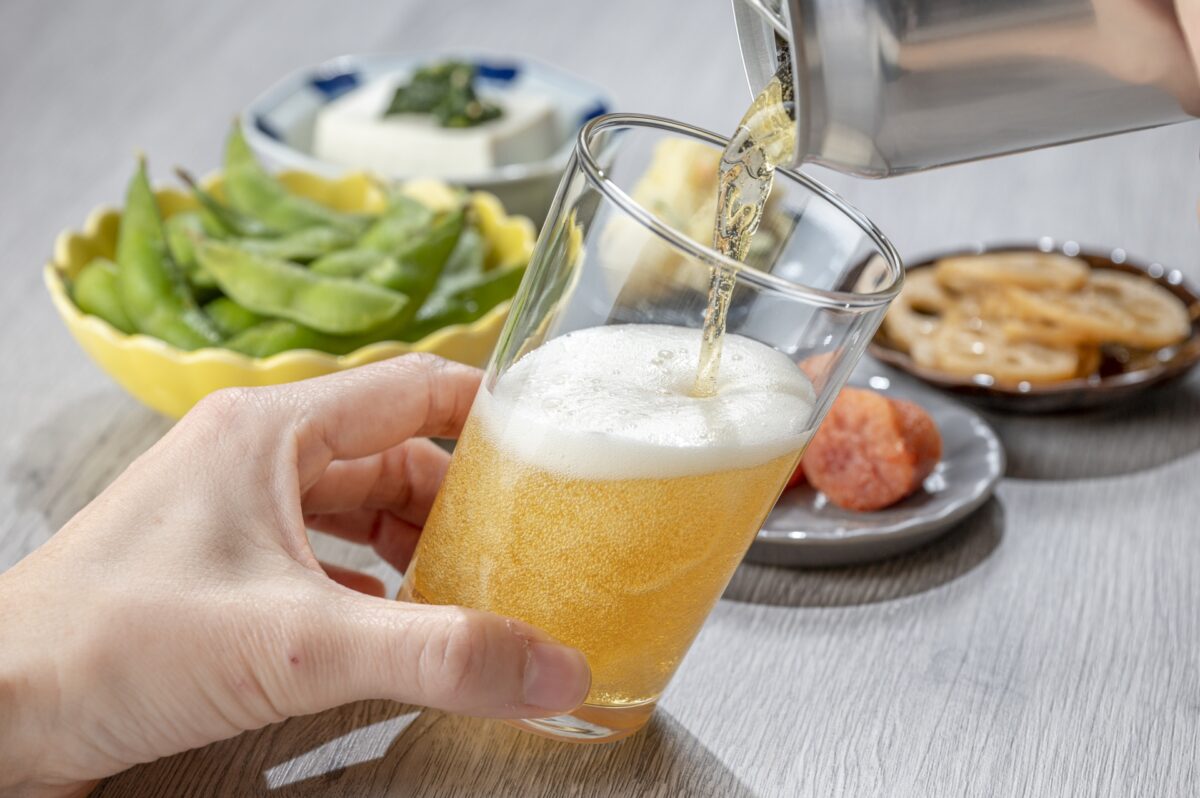
In Japan, pouring sake for others is called “お酌 (Oshaku)”, and pouring sake for your parents, your boss, or anyone you want to entertain will make them very happy. If you are at a drinking party or “nomikai” in Japanese, try to pour a drink into their glass!
9. How to correctly eat sushi
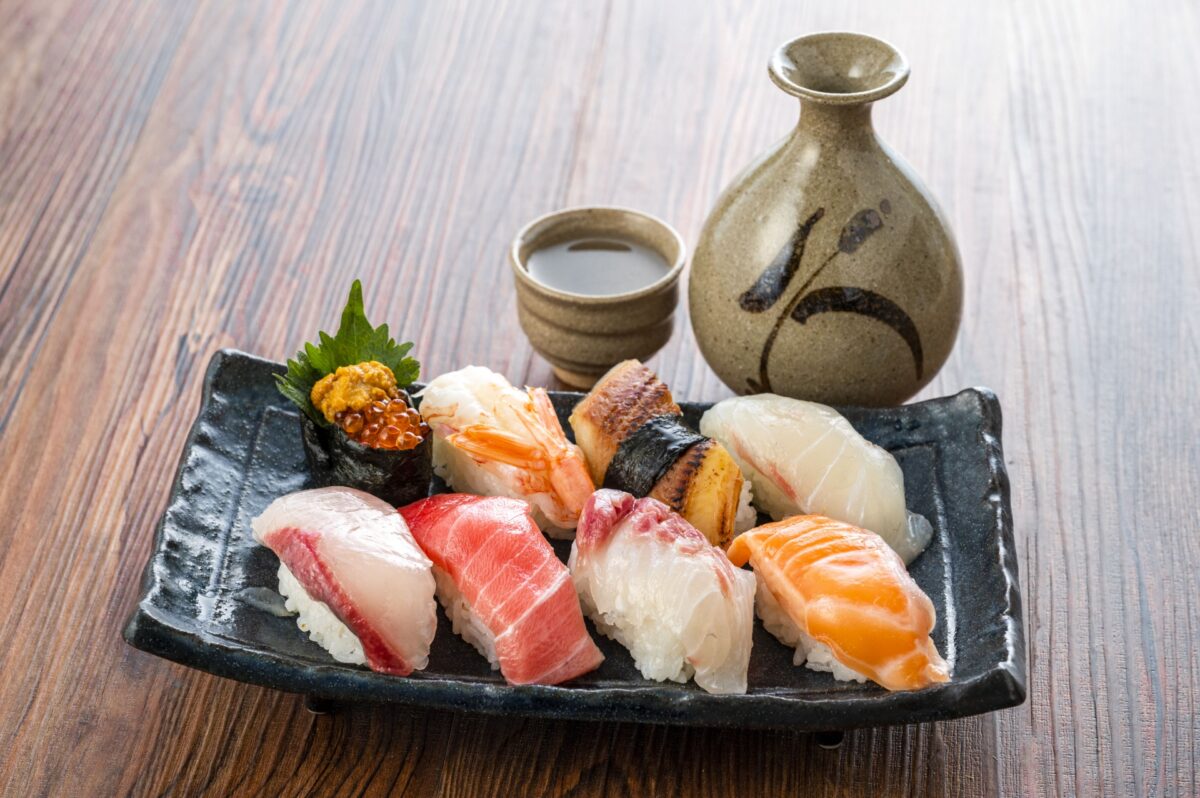
Sushi is a world-famous Japanese food, but did you know that there is actually a particular set of manners for eating sushi? When you eat sushi, you dip it in soy sauce, but it is said that you should avoid dipping the sushi in a lot of soy sauce because it might spoil the flavor of the ingredients of the sushi fish and rice.
The correct way to eat sushi is to dip it in a little bit of soy sauce. This way, the original flavor and taste of the ingredients can be preserved. When eating sushi, you may grab it with your hands or use chopsticks, but this is okay because using either of these manners is not considered a breach of etiquette.
10. No tipping
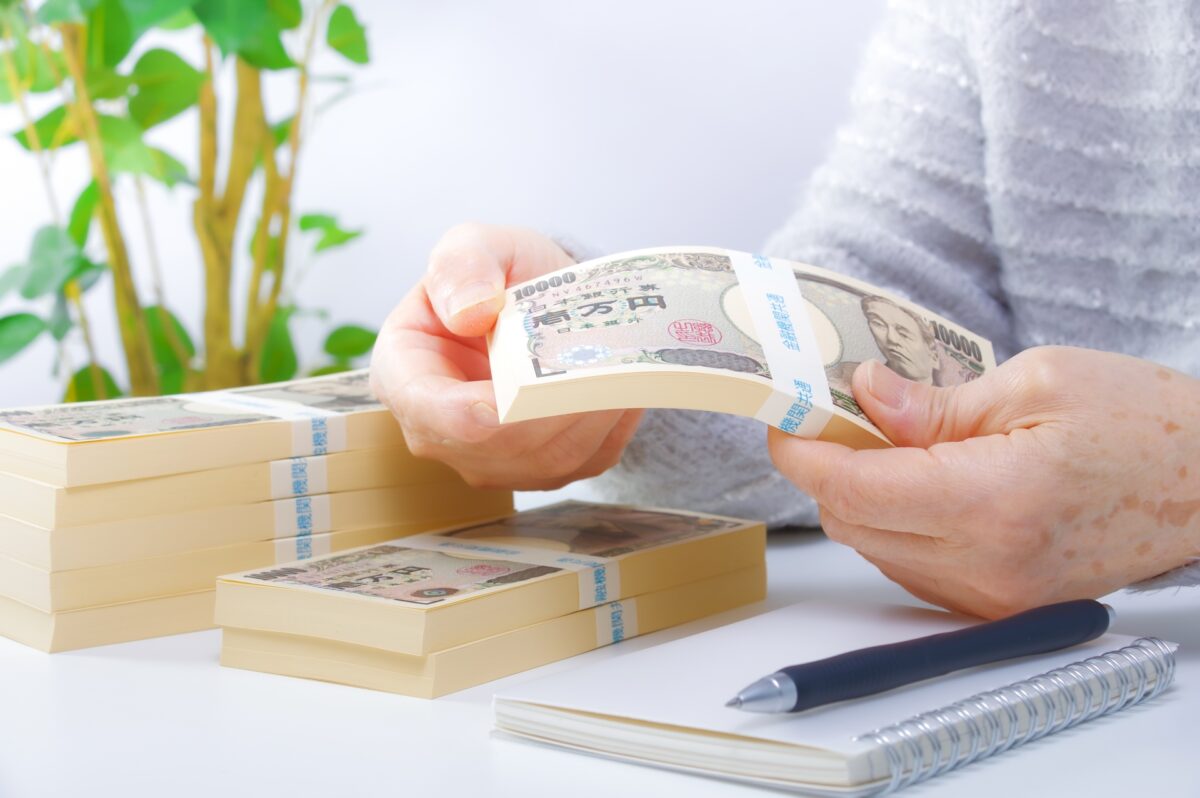
Tipping is mandatory in the U.S. and Canada, but in Japan, there is no need to tip at all, because the service charge is included in the price of the food. However, be aware that in some high-class restaurants and hotel buffets in Japan, you may be charged a service fee in addition to the food you order. In the case of such restaurants and hotels, they will present you with a bill that includes the cost of the meal and the service charge, so you should pay according to that amount. To find out in advance if you have to pay a service charge, check the official website of the restaurant or hotel, or contact them directly by phone or e-mail.
What do you think of the various table manners in Japan? Some of the table manners may surprise you when you compare them to your own country’s table manners, such as the fact that Japanese people tolerate the sound of slurping noodles. When you visit a restaurant in Japan, try to eat with Japanese table manners. It will surely make your Japanese dining experience more wonderful.
Japan Wonder Travel Tours
Japan Wonder Travel is a travel agency that offers guided tours throughout Japan.
From private walking tours to delicious Food and Drink tours, we can help you organize the best tours just for you! If you want to explore Japan and learn more about the history and backstories of each area you are visiting, our knowledgeable and friendly English speaking guides will happily take you to the best spots!
In addition, we can provide you with any assistance you may need for your upcoming trip to Japan, so please feel free to contact us if yu have any questions or need some help!
▶Tokyo Tsukiji Fish Market Food and Drink Tour
Explore the most lively and popular fish market in Tokyo and try some of the local’s favorite street foods and sake with one of our friendly and knowledgeable English speaking guides!

▶Tokyo 1–Day Highlights Private Walking Tour (8 Hours)
There’s no better way to explore an area than taking a tour with a knowledgeable local guide. You will have the chance to learn about the history and interesting background stories of Tokyo, as well as discover some hidden gems which can be hard to do without a guide.

▶Mt. Fuji Day Trip Bus Tour from Tokyo
Experience the breathtaking views of Mt. Fuji by visiting the highlights of the area on our guided sightseeing bus tour! Departing from Shinjuku in central Tokyo, you can travel comfortably to all of the best spots in the area by bus.

Follow us on Instagram, Facebook, Twitter, and TikTok for more travel inspiration. Or tag us to get featured!
Happy traveling!
Other articles you might be interested in

Mao Goto is a Japanese freelancer who was born in Hayama, Kanagawa prefecture, and raised in Tokyo. Since 2016 she lives in the Taito Ward, home to a lot of Japanese culture hotspots such as Asakusa, Akihabara, and Ueno. She has been interested in the field of English education in Japan and got her Master’s degree in March 2020. A lover of photography, travel, sweets, and cross-stitch. Contact her via Facebook.
This post may contain some affiliate links. When you click through and make a purchase we may receive some commission, at no extra cost to you.
